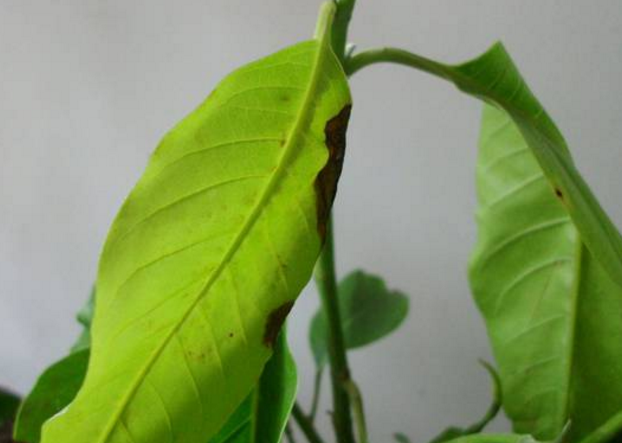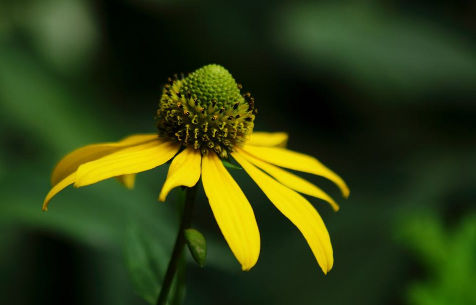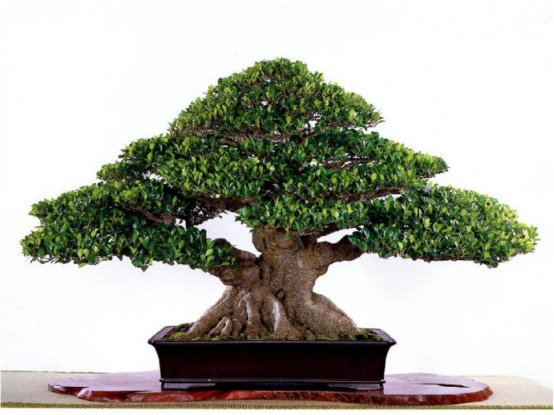Causes and solutions of yellowing of white orchid leaves
1. Improper watering
The white orchid should be watered appropriately, neither too much nor too little, too much can easily lead to stagnant water rotting roots in the basin soil, and too little will make the soil hardened and thus affect the normal growth of the root system. Once the root system has problems, the supply of water and nutrients to the leaves will also be greatly affected, and the leaves will appear yellowing.
Solution:
Watering is based on the principle of "no dry, no watering", but it should also be adjusted timely according to the climate and growth environment, usually keeping the basin soil at a suitable humidity.

2. the temperature is too high
Too high ambient temperature will aggravate the transpiration of white orchid leaves. At this time, if the basin soil is insufficient and the environment is not ventilated, it will lead to the lack of water and yellowing of the leaves.
Solution:
In order to avoid excessive temperature difference, it is appropriate to maintain an average temperature of 5-10 ℃. When the temperature increases, special attention should be paid to the ventilation and ventilation of the culture environment and humidification of the dry air.
3. Too little light
Magnolia flowers like the growth environment with sufficient light, if they are in a more shady environment for a long time, photosynthesis will be greatly affected, light plants grow too long, heavy leaves yellowing and withering.
Solution:
To ensure sufficient light, you need to put the white orchid in the courtyard or home balcony, windowsill and other places where you can see the light for a long time, but in summer, you should pay attention to avoid the direct light, exposure will also adversely affect the plant.
4. Chlorosis
Chlorosis can easily lead to yellowing and shedding of leaves, and in serious cases, it will kill the whole plant.
Solution:
Slightly acidic soil should be selected, a small amount of alkaline inorganic fertilizer should be applied, and when the disease occurs, ferrous sulfate (0.2%) should be sprayed on the leaf surface with a frequency of once a week for 3-4 times, or alum fertilizer and water should be sprayed once a week for 3-4 times to alleviate the disease.
5. Root rot
The harm of root rot is also more serious, which will make the roots black and rot, and affect the leaves from bottom to top.
Solution:
The occurrence of this disease is usually due to excess water, watering should be "no dry, no watering", and keep the soil loose and enhance its drainage. When there is more rainfall during the Meiyu period, timely rain protection measures should be taken for the plants; more broken tiles can be added at the bottom of the basin to speed up the flow of water and promote drainage.
The yellowing of white orchid leaves is relatively easy to deal with as long as you find the right reasons, the above reasons and solutions hope to be helpful to everyone, more white orchid related content, please pay attention to the four Seasons Plant Network!
What to do about the yellowing of white orchid leaves? the causes of yellowing of white orchid leaves and their solutions
Many people do not know what to do for the yellowing of white orchid leaves. Let's talk about the causes and solutions for the yellowing of white orchid leaves.
The reason why the leaves of white orchids turn yellow:
1, too much water: White orchid pot soil watering too much or too little, sometimes dry and wet, etc., fleshy roots can not stand, will cause yellow leaves, and so on.
2, the temperature is too high: the yellowing of the leaves of white orchids has a lot to do with the temperature, and the leaves will turn yellow when the temperature is too high and muggy.
3, too little light: White orchids like the sun, if the sun is too little, it will also cause poor plant growth and yellow leaves.
4. Chlorosis: yellowing of white orchids will also cause yellowing and shedding of leaves, and in serious cases, plants will die.
5. Root rot: White orchids have root rot, and when the roots rot and blacken, the leaves will also lead to yellowing and shedding.
The solution to the yellowing of white orchid leaves:
1. Watering should be appropriate. After the basin soil is dry, the amount of water should not be too much at one time, nor should it be watered for a long time because of drought.
2, the temperature should be kept stable, but high or too low, 5-10 ℃ is the most suitable, the temperature rises, the muggy environment should pay attention to ventilation, and strengthen humidity management.
3, the white orchid is suitable for planting in the courtyard or home balcony, windowsill and other places, need sufficient sunshine, but can not be exposed to the sun, the summer sun should pay attention to shade.
4. The slightly acidic soil should be selected in the white orchid pot soil, and more alkaline inorganic fertilizer or water should not be applied. If chlorosis occurs, it should be foliar sprayed with 0.2% ferrous sulfate in time, once a week, 3 ^-4 times continuously, or with alum fertilizer water once a week, 3 or 4 times continuously, to control the disease.
5, root rot is mainly caused by too much water, usually wait until the basin soil surface whitening before watering, and often loosen the soil. When there is too much Mei Yu or Rain Water, it is appropriate to move under the eaves or indoors to take shelter from the rain; when putting on the basin, more broken tiles should be added to the bottom of the basin to smooth drainage and put up the basin bricks to speed up the flow of water.
What if the leaves of white orchids turn yellow? how to deal with the yellow leaves of white orchids?
White orchid belongs to the deciduous tree of Michelia of Magnoliaceae, which is as high as 17mur20 meters. Potted plants are usually 3mur4 meters tall, and there are also small plants. Bark gray, young branches evergreen, leaves oblong, simple leaves alternate, turquoise, leathery glossy, long oval. The flower bud is like the pen head of a brush. There are 8 petals, white as snow, born between leaf axils. The flowers are white or yellowish, the petals are thick, long lanceolate, fragrant, with a long flowering period, and bloom continuously from June to October.
Analysis of yellowing of leaves of White Orchid
In winter, white orchids sometimes appear yellow. In winter, when the white orchid just enters the room, the respiration of the leaves is still relatively strong, if the watering is not timely, the basin soil is dry, the roots and leaves will wither. After the Winter Solstice, the white orchid began to dormancy, watering should be reduced, too much watering will cause leaves yellowing, or even fallen leaves.
Secondly, there are the reasons of light and temperature. In winter, the light is insufficient and the temperature is too low. If the white orchid is in this state for a long time, the white orchid can not photosynthesize well, which will cause the leaves to turn yellow.
We also need to pay attention to the problem of fertilization in winter. Generally speaking, after the white orchid enters the room in winter, there is no need to apply fertilizer, because the plant is dormant, fertilization may cause its rotten roots and leaves to turn yellow.
How to deal with the yellowing of white orchid leaves
Before entering the house in winter, white orchids need to be pruned, cutting off those withered and diseased branches on the plant to avoid withering and even diseases and insect pests.
When breeding indoors, you generally need to meet the following conditions: put the white orchid in a sunny place indoors, and raise the temperature to protect its roots so that it can resume growth in spring. At the same time, we need to stop fertilizing, and do not water too much, keep the basin soil dry, we can safely pass the winter.
If, in the family breeding white orchid, the lack of good conservation conditions, we can use a relatively simple method to make it safe through the winter. The method is to cover the magnolia with a plastic bag and tie it up, and then put the flowerpot in the sunny place, which can also play the role of heat preservation and moisturizing, which is conducive to the white orchid through the winter.
- Prev

The breeding method of sudden laughter
Bulb reproduction is the simplest propagation method of Xiaodi. Generally, it is dug up during the dormant period or after flowering, go to the bulb near the cue ball, and plant the bulb, which usually blossoms after a year or two. The base of the scale is cut and propagated in a meter-shaped way to clean the base of the cut scale, which can cut half the length of the bulb.
- Next

two。 Matters needing attention in cultivating banyan bonsai
1. We should pay attention to the banyan bonsai cultivation in a ventilated and transparent place to ensure that there is a certain amount of air humidity. Lack of sunlight, lack of ventilation, so that the plant will be unhealthy, easy to yellowing, wilting, but also vulnerable to diseases and insect pests, and may cause plant death in serious cases. The banyan tree likes to live in a warm environment
Related
- Fuxing push coffee new agricultural production and marketing class: lack of small-scale processing plants
- Jujube rice field leisure farm deep ploughing Yilan for five years to create a space for organic food and play
- Nongyu Farm-A trial of organic papaya for brave women with advanced technology
- Four points for attention in the prevention and control of diseases and insect pests of edible fungi
- How to add nutrient solution to Edible Fungi
- Is there any good way to control edible fungus mites?
- Open Inoculation Technology of Edible Fungi
- Is there any clever way to use fertilizer for edible fungus in winter?
- What agents are used to kill the pathogens of edible fungi in the mushroom shed?
- Rapid drying of Edible Fungi

